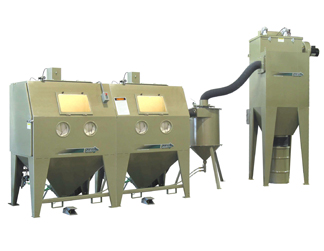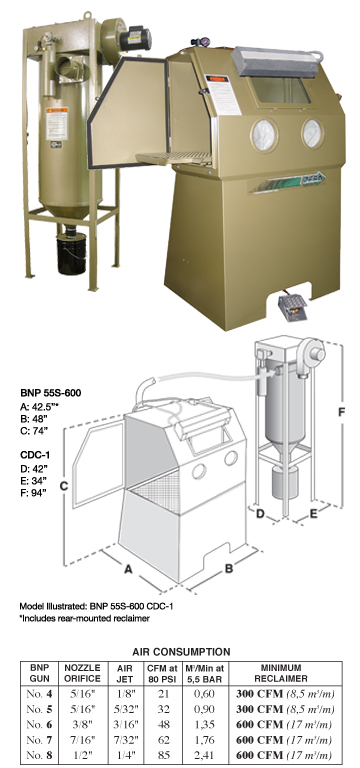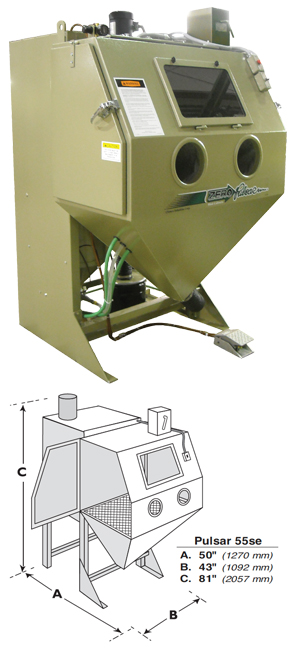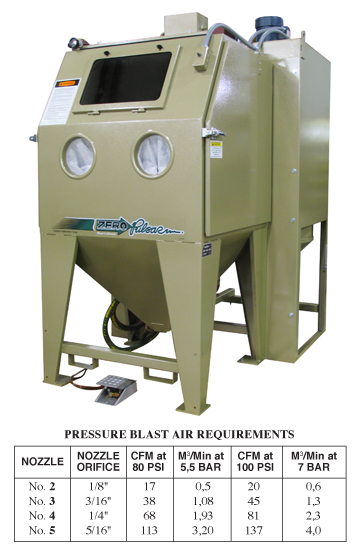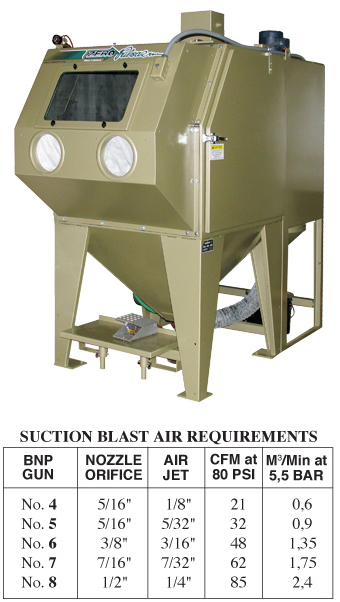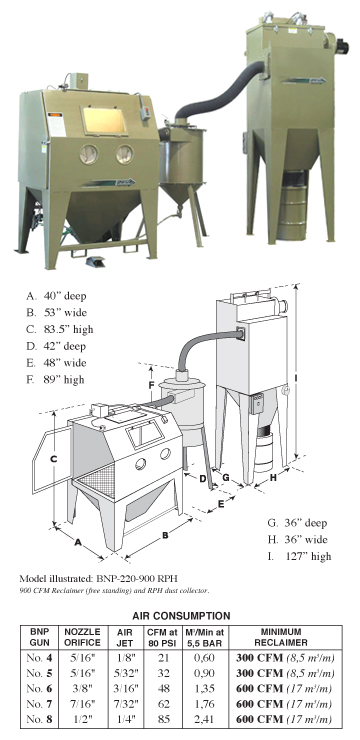Abrasive air blast cabinets are utilized all across industry to either obtain a desired surface finish and to strip or remove coatings. Suction cabinets provide a slower, more controlled means of blasting. Suction cabinets are one of the more popular cabinets sold due to lower initial cost and a need for less air to operate the cabinet.
Suction Blast Cabinet Pros
- Lower initial cost – A suction Blast Cabinet costs considerably less than a pressure blast cabinet – the reason for the lower initial cost is that the suction cabinet has less involved in its build which results in a lower cost for you.
- Lower Operating Costs – Since the blast media is being supplied by a suction action rather than being fed with pressure, the media will leave the blast nozzle at a lighter pressure and speed. This ultimately will result in less wear to the internals of your cabinet and equipment including the blast nozzle, window covers, and blast cabinet lining.
- Lower Air Volume Requirements – If you are a small shop or air availability is a challenge, suction feed blast cabinets will use less air compared to a pressure feed cabinet with a comparable blast nozzle size.
Suction Blast Cabinet Cons
- Slower Production Rates – A suction blast cabinet will supply media at a lower pressure and a reduced speed. In general Pressure Feed Cabinets will be 3 – 4 times faster in cleaning products than a suction feed sandblast cabinet.
- Less Cleaning Capability – Due to the lower pressures that suction blast cabinets use to clean products, they will typically not be able to remove heavy deposits from a products surface.
- Will not work with all medias – Heavy metallic medias like steel shot will typically not be able to be blasted in a suction blast cabinet.


